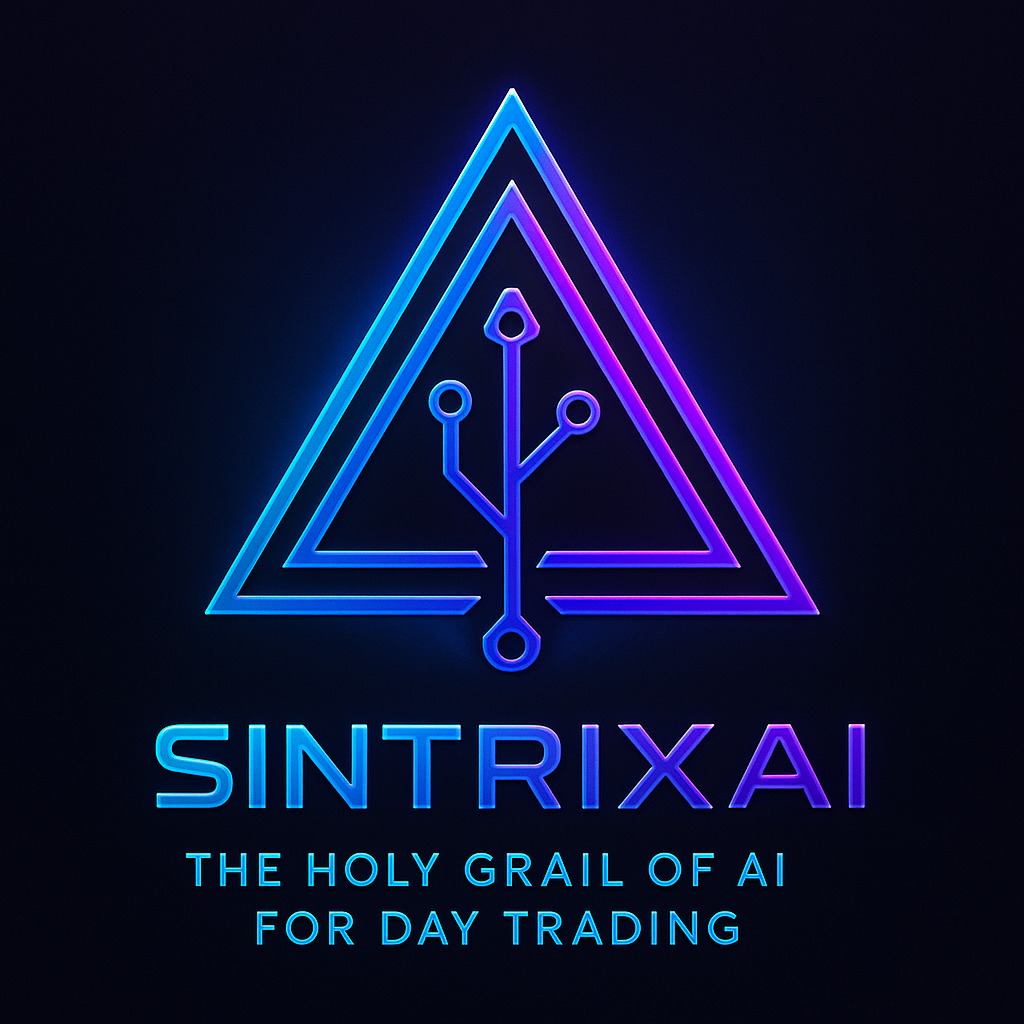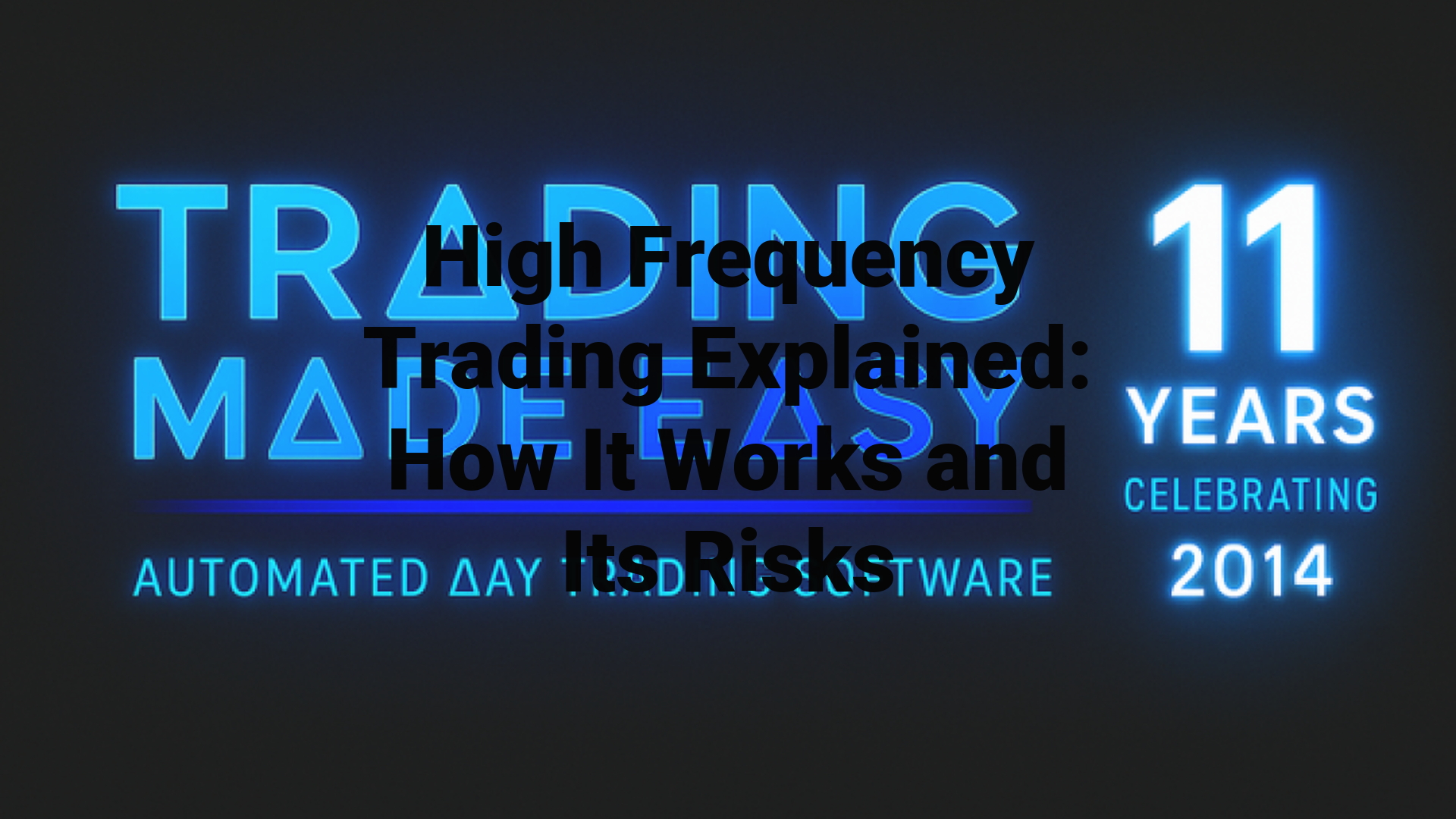High-frequency trading, or HFT, is an ultra-fast, computer-driven style of buying and selling securities that hunts for pennies—or fractions of a penny—by firing off thousands of orders in microseconds. Algorithms watch every tick, decide, and execute faster than a blink, extracting profit from tiny imbalances before a human mouse can click.
Since electronic trading floors lit up in the early 2000s, HFT has grown to command roughly half of U.S. equity volume and almost as much controversy. Supporters credit it with tighter spreads; critics warn that the same speed can amplify chaos. The sections ahead cut through the jargon by unpacking the technology stack, common strategies, regulatory lines, real-world risks, and practical takeaways for everyday traders.
Defining High-Frequency Trading: Speed, Scale, and Algorithms
When people ask for “high frequency trading explained,” the answer starts with raw velocity. These systems live inside exchange data centers, parse full-depth order books in nanoseconds, and decide whether to buy or sell before most screens refresh. Yet speed is only half the story—sheer scale and purpose-built algorithms allow firms to fire off millions of orders a day while targeting profits measured in fractions of a cent.
Key characteristics of HFT
- Execution measured in micro- to nanoseconds, achieved through colocation and custom hardware
- Order volumes that can hit several million per session thanks to automated cancel/replace logic
- Average holding periods often < 100 ms; positions are rarely carried overnight
- Profit objective: capture the bid-ask spread or tiny mispricings repeatedly
| Metric | Human Day Trader | HFT System |
|---|---|---|
| Typical latency | 100–300 ms (mouse click) | < 1 ms (automated) |
| Orders per day | Dozens | Hundreds of thousands-plus |
| Average hold time | Minutes to hours | Milliseconds |
| Profit per trade | $0.05–$0.20 | <$0.005 |
HFT vs. traditional algorithmic trading
All HFT is algorithmic, but not every algorithm runs at high frequency. Traditional algos—think VWAP or basic trend-following—aim to automate execution over minutes or days and can run on standard broker infrastructure. HFT, in contrast, revolves around latency competition, requires dedicated data-center racks, and focuses on near-instant market microstructure signals rather than broader strategy logic.
Market participants dominating HFT
- Virtu Financial – public market-making powerhouse known for near-continuous profitability
- Citadel Securities – subsidiary of Citadel LLC, top liquidity provider across equities and options
- Jump Trading – privately held firm specializing in both market making and cross-asset arbitrage
- Tower Research – early pioneer in FPGA-driven low-latency strategies
- Bulge-bracket banks – Goldman Sachs and JPMorgan run internal HFT desks to complement client flow
These players combine deep capital, elite engineering talent, and regulatory expertise to stay at the forefront of sub-millisecond trading.
The Technology Stack That Makes HFT Possible
Ultra-low latency is engineered, not luck. High-frequency desks spend millions shaving microseconds off every step—hardware, code, and data pipelines are all optimized so the algorithm sees, decides, and transmits almost simultaneously.
Hardware edge: colocation, fiber, and FPGAs
Racks sit inside the exchange’s own data center—“colocation”—so signals travel a few meters, not miles. Orders move over dark-fiber lines measured in nanoseconds, while microwave relays bridge Chicago-New York in ~4 ms. Custom chips such as field-programmable gate arrays (FPGAs) execute logic directly in silicon, bypassing the operating system to trim latency below 1 µs.
Software and algorithm design
Latency-sensitive languages like C++ and Rust run lean, event-driven kernels. The code listens to raw multicast packets, updates order-book objects, and triggers predefined actions. Continuous integration pushes new models after back-tests against terabytes of historical ticks, and built-in auto-cancel rules abort stale quotes before they become liabilities.
Data feeds and market access
Top firms subscribe to premium “depth-of-book” feeds that show every resting order—hundreds of thousands of updates per second—versus the slower SIP public tape. Smart-order routers choose among dozens of venues, while direct FIX or binary protocols sidestep broker platforms to save precious microseconds.
Trade-timeline walk-through: one microsecond in the life of an order
T0 ns– Feed handler receives bid lift at $40.02+100 ns– FPGA computes edge, flags buy+300 ns– CPU validates limits, risk check passes+600 ns– Packet hits exchange switch, matching engine fills+900 ns– Fill confirmation returns; inventory monitor updates
That entire round-trip, including profit calculus, finishes before a human neuron fires, which is why high frequency trading explained in speed terms alone still astonishes most traders.
Popular High-Frequency Trading Strategies in Practice
Every latency upgrade is pointless without a money-making scheme, so let’s run through the playbook that most high-speed desks keep on their whiteboards. Although naming conventions vary, the strategies below dominate sub-millisecond trading and illustrate how “high frequency trading explained” in theory becomes revenue in practice.
Market making and liquidity provision
An HFT market maker posts a two-sided quote—$40.00 bid and $40.02 ask—refreshing it hundreds of times per second. When an incoming market order hits the ask, the algo sells; when another order later hits its bid, it buys back, banking the $0.02 spread (minus fees). Inventory rules throttle exposure so the book never drifts too long or short.
Statistical arbitrage and spread trading
Stat-arb bots target price gaps between correlated assets: ETF vs. basket, futures vs. cash, or twin stocks such as Visa/Mastercard. They compute a z-scorez = (current spread − mean) / std dev
and pounce when |z| > 2, betting on mean reversion over milliseconds. Positions auto-unwind once the spread snaps back.
Momentum ignition and event-driven plays
Other algos sniff for sudden volume surges or machine-read news headlines, then “ping” the order book to confirm directional flow. They chase the burst for a tick or two and dump the position fast. Regulators frown on crossing the line into spoofing, so compliance filters kill quotes that look manipulative.
Worked micro-profit example
Buy 25,000 shares at $40.00 and sell them moments later at $40.20. Profit per cycle: $0.20 × 25,000 = $5,000. At 400 cycles a day that’s a theoretical $2 million—tiny edges, massive turnover.
Why High-Frequency Trading Sparks Debate
Few market topics polarize professionals like high-frequency trading. Fans call it vital plumbing; critics a speed-fueled casino. Knowing both views helps retail traders sift substance from headline noise.
Claimed market benefits
SEC and academic studies show average U.S. equity spreads roughly halved after HFT arrived. Rapid quote replenishment also trims visible slippage, allowing mutual funds and pensions to execute large orders more cheaply.
Common criticisms and controversies
Michael Lewis’s ‘Flash Boys’ framed HFT as rigged latency arbitrage. Tactics such as spoofing, quote stuffing, and fleeting orders can overload exchange gateways and leave slower human traders paying the bill.
Impact on volatility and price discovery
In quiet tapes, algorithmic liquidity smooths micro swings. But under stress many HFT desks yank quotes together—as during the 2010 Flash Crash—fanning intraday spikes and muddying price discovery when investors need it most.
Ethical and societal considerations
Observers ask whether an arms race costing millions for microwave links delivers public benefit. Fair-access debates question if microsecond privilege undermines confidence in markets meant to be universal.
Regulations, Legal Boundaries, and Oversight of HFT
Speed doesn’t exempt traders from the rulebook. Regulators on every major exchange now police algorithms as aggressively as they police humans, layering traditional market-abuse statutes with new, tech-specific mandates designed to keep microsecond activity fair and orderly.
U.S. regulatory framework
The SEC’s Reg NMS bans trade-throughs, effectively forcing HFT quotes to honor the national best bid and offer, while Rule 15c3-5 (“Market Access”) requires brokers to bolt on pre-trade risk checks. Reg SCI mandates robust disaster recovery for exchanges and large participants. Futures trades fall under CFTC oversight, and FINRA’s automated surveillance flags patterns such as spoofing in real time.
International approaches
Europe’s MiFID II forces millisecond clock synchronization, algo IDs, and mandatory testing before deployment. ESMA conducts cross-venue monitoring, ASIC (Australia) caps order-to-trade ratios, and MAS (Singapore) requires circuit breakers—different acronyms, same goal: curb runaway machines.
Is HFT illegal? Understanding permissible vs. prohibited practices
High-frequency trading itself is legal; manipulative sub-tactics are not. Spoofing, quote stuffing, and momentum ignition have triggered multimillion-dollar fines and, in high-profile cases, prison sentences. Legitimate market making and statistical arbitrage remain fully within the law.
Compliance technology and surveillance
Firms deploy real-time kill switches, dynamic position limits, and audit-trail loggers that capture every nanosecond. Machine-learning monitors scan order books for abusive footprints, while independent compliance teams run post-trade analytics to prove the algo behaved.
Financial Performance and Risks of High-Frequency Trading
Outsized headlines mask a basic reality: HFT is a thin-margin, high-overhead pursuit where ever-faster gear chips away at returns and magnifies technical danger.
Cost structure and capital requirements
A serious build-out means seven-figure checks for exchange colocation racks, microwave or dark-fiber links, custom FPGAs, plus perpetual data, exchange, and compliance fees.
Expected returns and margins
Industry estimates put annual ROIs near 5–15%; top outfits may top 20%, yet the average per-trade edge often sits below \$0.005.
Operational and model risks
Code bugs, mis-tuned kill switches, or a 10-µs latency hiccup can unleash millions of mispriced orders before human intervention.
Systemic risks and flash crashes
During the 2010 Flash Crash and 2015 Treasury spike, many HFT desks yanked quotes together, draining liquidity and accelerating price collapses.
Model inaccuracies and tail events
Overfitted signals fail when market regimes shift; rare “black-swans” can flip normally stable correlations. Regular stress tests and chaos drills are essential hygiene.
What Retail Traders Need to Know and Available Alternatives
Retail traders don’t need microwave towers or FPGAs to automate their approach. What matters is choosing tools that respect your capital, bandwidth, and risk tolerance while accepting that true high-frequency trading remains an institutional sport.
Can individuals compete in pure HFT?
Short answer: no. Six-figure colocation bills, specialist hardware, and strict regulatory hurdles put microsecond trading outside realistic retail reach.
Retail-friendly automation platforms compared
Instead, look at second-to-minute automation that still removes emotional clicks.
| Feature | Day Trading Made Easy | Broker Algo Builder | QuantConnect |
|---|---|---|---|
| Typical latency | Seconds | Seconds–minutes | Minutes |
| Built-in risk controls | Yes | Basic | DIY |
| Learning curve | Low | Medium | High |
Risk management best practices for active traders
- Keep position sizes modest
- Automate stop-loss levels
- Diversify signals to avoid strategy concentration
Staying informed: data, education, and communities
Follow SEC/FINRA alerts, attend weekly webinars, and trade notes with vetted online forums to stay current without chasing every headline about “high frequency trading explained.”
Key Takeaways on High-Frequency Trading
- HFT’s advantage lives in time—microseconds of latency let algorithms harvest fractions of a cent thousands of times a day.
- The same speed that tightens spreads in calm markets can yank liquidity in crises, fueling flash-style sell-offs.
- Building and running an HFT stack demands deep pockets for colocation, custom hardware, premium data, and nonstop R&D—far beyond most individual traders.
- Regulators tolerate fast trading but slam spoofing, quote stuffing, and other manipulations with steep fines and even jail time.
- For retail traders, the smarter play is slower automation that emphasizes robust risk controls instead of raw speed.
Curious how you can automate without chasing nanoseconds? Check out the user-friendly tools and weekly webinars offered by Day Trading Made Easy and put disciplined, emotion-free execution to work in your own account.


Leave a Reply